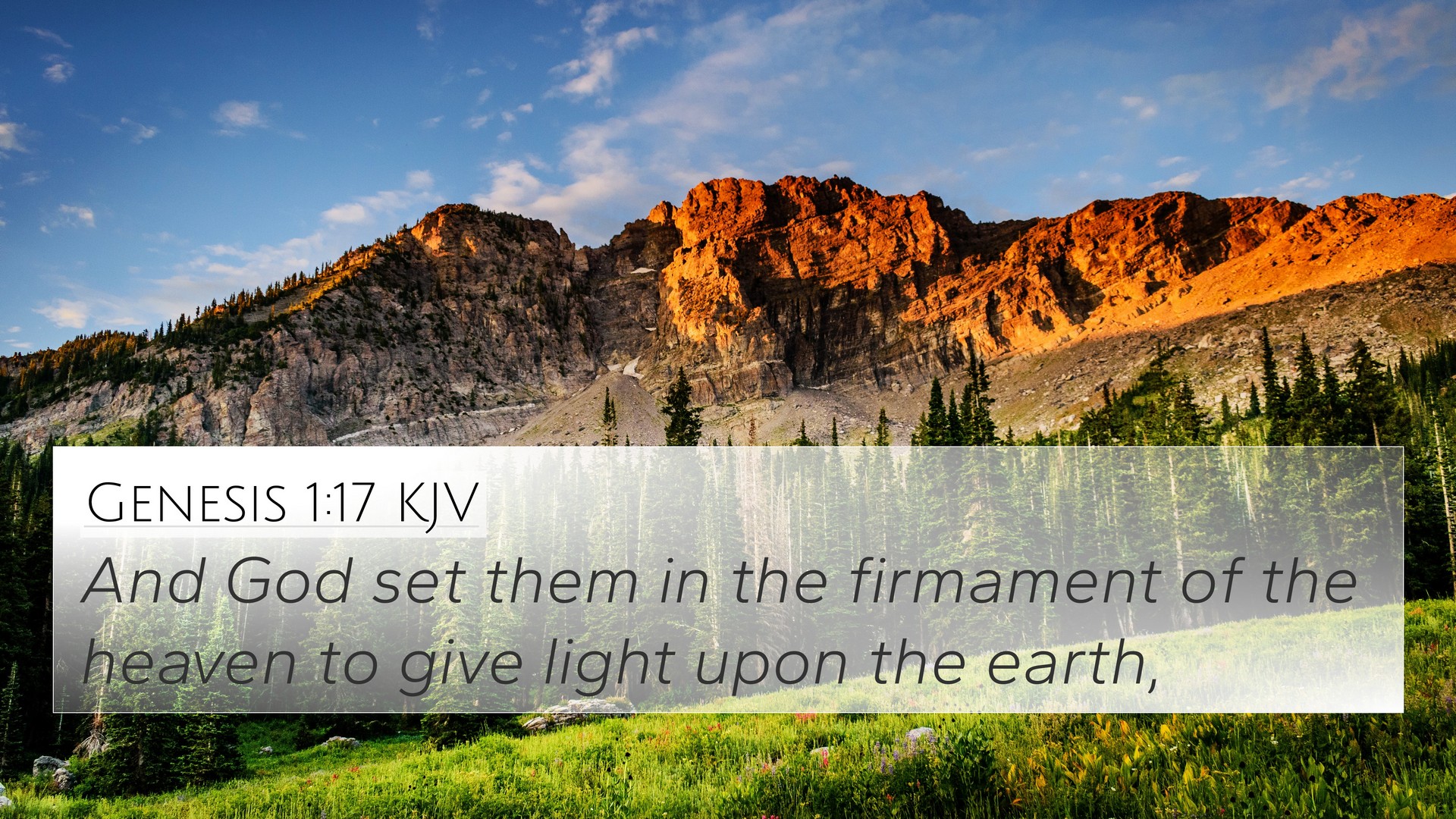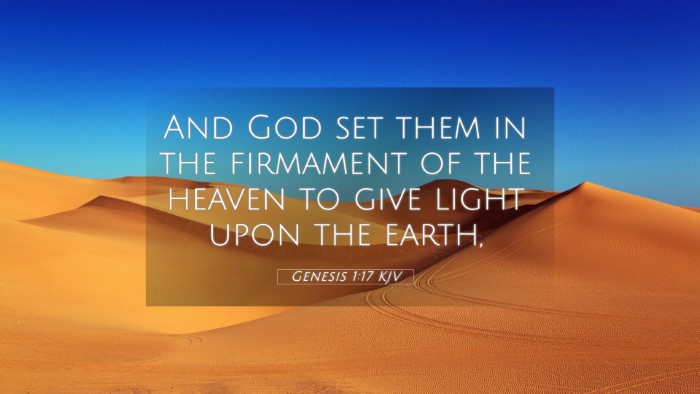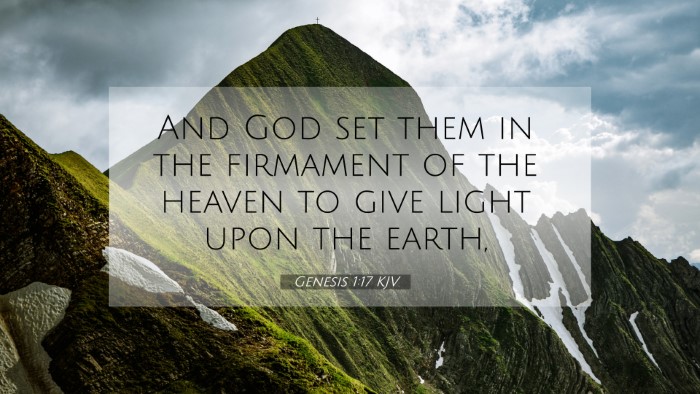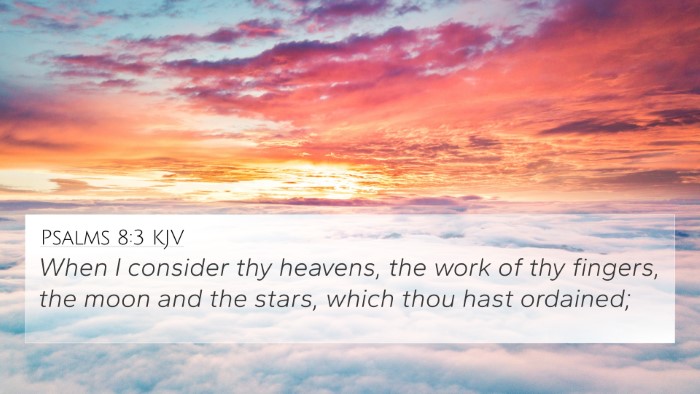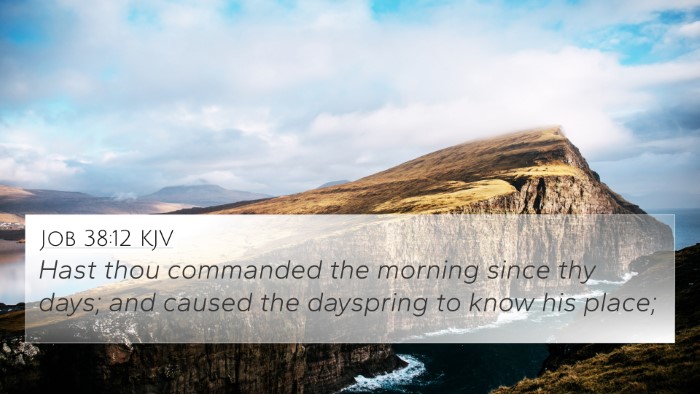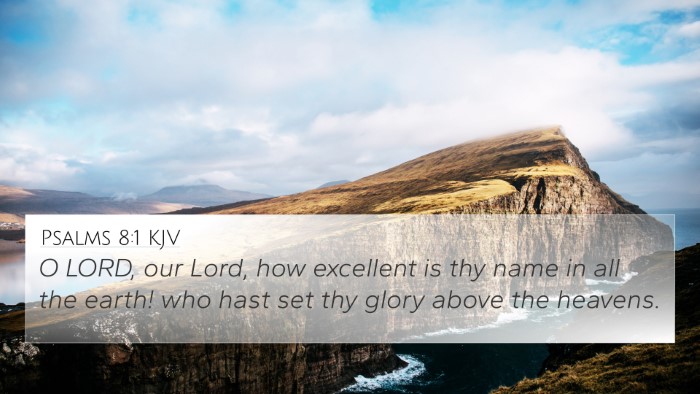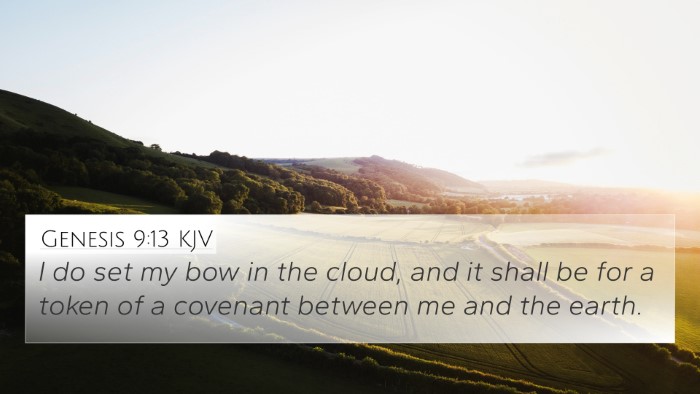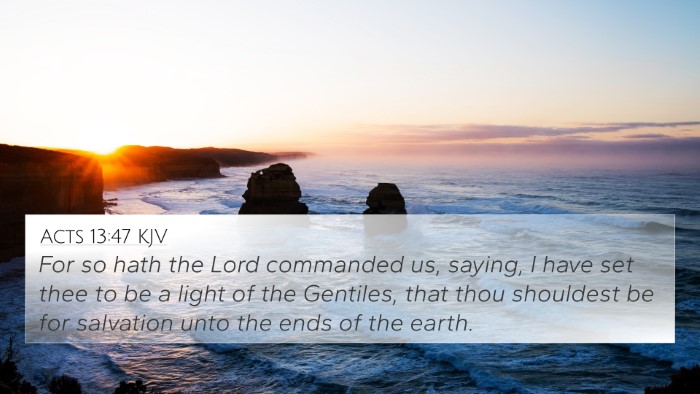Understanding Genesis 1:17
Genesis 1:17 states, "And God set them in the firmament of the heaven to give light upon the earth." This verse marks an important moment in biblical creation as it describes God's intentional placement of the celestial bodies—specifically the sun, moon, and stars—to fulfill a purpose in the created order.
Combined Insights from Public Domain Commentaries
This verse elucidates several theological and practical implications as explored by noted commentaries:
-
Matthew Henry: Henry emphasizes that God’s act of placing the stars in the firmament signifies His sovereignty and control over creation. He notes that the heavenly bodies serve not merely for illumination but also for the marking of seasons, days, and years (Genesis 1:14). This underscores the reliability and order that God has established within His creation.
-
Albert Barnes: Barnes interprets this verse as a declaration of God's glory. He points out that setting the luminaries in the heavens not only illuminates the earth but also reflects God's wisdom and creative power. The intentionality with which God creates serves as a reminder of His divine authority over the cosmos.
-
Adam Clarke: Clarke brings attention to the existential purpose of light in creation. He asserts that the establishment of the sun and moon during the creation week had significant implications for life on earth. He mentions that these celestial bodies symbolize God's presence and guidance, offering a metaphorical representation of spiritual illumination in the lives of believers.
Thematic Connections and Cross-References
Genesis 1:17 can be linked to various other Bible verses that deepen our understanding through cross-referencing Bible scriptures:
- Genesis 1:14-19: These verses provide context for the creation of the luminaries, explaining their purposes in greater detail.
- Psalm 19:1-4: This passage praises the heavens and their declaration of God's glory, reinforcing the significance of celestial bodies.
- Isaiah 40:26: God's sovereignty over the stars is reiterated here, showcasing His omnipotence and intelligence in creation.
- Job 38:33: God questions Job about the workings of the heavens, affirming divine mastery over cosmic order.
- Matthew 5:14: Jesus refers to His followers as the light of the world, establishing a spiritual parallel to the physical light created by God.
- Revelation 21:23: The New Jerusalem does not need the sun or moon for light because the glory of God illuminates it, connecting past creation with future fulfillment.
- Romans 1:20: This verse indicates that God’s qualities are evident in creation, emphasizing how the creation reflects the Creator's majesty.
Connecting Themes and Interpretations
Genesis 1:17 not only frames a narrative about physical light but also casts a broader light on biblical themes such as:
- Divine Authority: The act of creation speaks to God’s ultimate authority over everything in existence.
- Purpose and Order: Each component of creation serves a specific purpose, indicating a structured, meaningful world.
- Illumination: Both physical and spiritual light play an integral role in understanding God's presence and guidance in our lives.
Guidance Through Bible Cross-Referencing
This verse serves as a rich ground for thematic Bible verse connections and an example of how to leverage bible reference resources in study:
- Utilize a bible concordance to identify related verses reinforcing the themes of creation and light.
- Explore Bible cross-reference guides to delve into other scriptural passages that relate prominently to Genesis 1:17.
- Engage in cross-reference Bible study methodologies to foster deeper understanding of interconnected scriptural teachings.
- Consider employing a bible cross-reference system to methodically draw connections between Genesis and other parts of the Bible.
Conclusion
In summary, Genesis 1:17 stands as a testament to God's sovereign act of creation, emphasizing the roles of the celestial bodies He placed in the heavens. Through a comparative analysis of this verse with others, believers can cultivate a richer understanding of the profound truths embedded in Scripture. By engaging with cross-referencing biblical texts, one not only appreciates the intricate tapestry of God’s word but also the divine order He has established from the very beginning.
